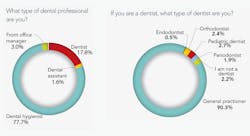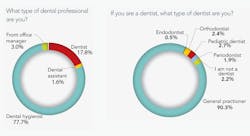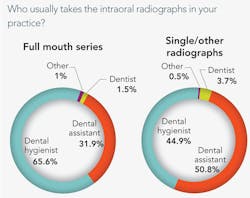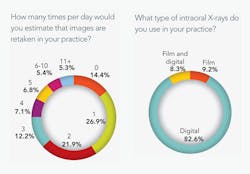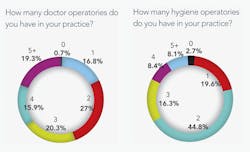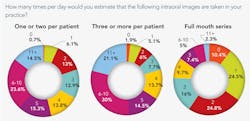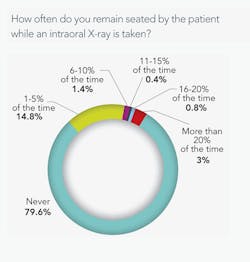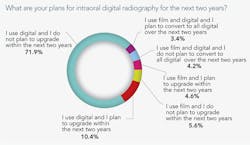Comfort Levels
The pros, cons, and areas for improvement in digital radiography
By Lerin Madole, Editorial Intern
On the subject of digital radiography, there seems to be a general sense of satisfaction among dental professionals with the systems that are currently in place.
Our recent digital radiography survey turned out to be a rather popular one. We received close to 1,500 responses on most of our questions, the majority of which came from dental hygienists and a decent number of general dentists as well.
Most practices use digital intraoral X-rays as opposed to film anymore and have no plans to make any kind of upgrade in the immediately foreseeable future. That said, it seems that many rely heavily on their intraoral X-ray systems. An image or two per patient is found necessary as many as six to ten times on a daily basis in addition to several full mouth series daily. We're so glad to have heard back from so many hygienists, as it seems that they tend to be the ones who take the X-rays. They're the ones who talk wary patients into having intraoral X-rays taken regularly, they have tricks of the trade for dealing with strong gag reflexes or small mouths, and they can even be a great comfort to patients that experience pain during the X-ray process.
So what are the pros and cons to these systems that provide so much useful information about the majority of dental patients? Why have dental professionals had to learn how to mitigate so many challenges with the intraoral X-ray process? Most of our responders are successful with each image on the first try and rarely have to retake any. A staggering 73.5 percent of dental professionals are using rigid wireless sensors as opposed to flexible ones or none at all. They report them to be quick, easily integrated with their practice management system, and portable. Those benefits, though, come with some tradeoffs. They tend to be expensive, cause the patient pain or discomfort, and don't always capture the range of image area that is hoped for.
"Patient discomfort" is a term that encompasses a few different challenges: namely dental tori, gag reflexes, small mouths, and some wariness of the safety implications of any X-ray. While patients that fall into any of these categories are not huge in number, those that do often cause dentists to resort to nitrous oxide sedation, external imaging as an alternative (when available), or even neglecting to take radiographs unless "absolutely necessary." Perhaps this leads us to more questions for our dental professionals about what new digital radiography system features might seem beneficial enough to stir consideration for upgrade sooner rather than later. There is some suggestion that flexible wireless sensors solve many of the patient discomfort challenges that arise in the radiography process, yet only 13 percent of our survey responders are using them.
We'll let the graphical results of this survey tell their story for now and draw some inspiration for future questions of our dental professionals. We'll hope to gain more insight into the evolution of the digital radiography industry and what the next big step might be. After all, film radiographs were once the norm and have now been mostly replaced with digital. The next big leap may be from rigid wireless sensors to flexible ones in hopes of making more patients more comfortable and more likely to visit the dentist more often.
Close to 15% of dental offices polled said that they take more than five full mouth series intraoral images each day. |
Over 80% of dentists use digital radiography and 10% of those dentists plan to upgrade within the next two years. Only 10% use film only. |
